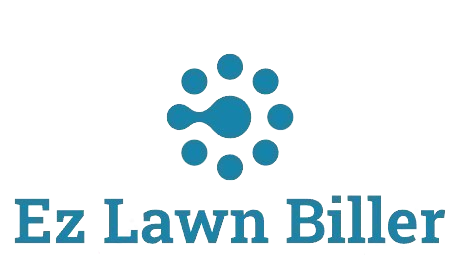Avoiding Common Follow-Up Mistakes: Maximize Your Client Relationships
Avoid These Common Follow-Up with Clients Mistakes
In the fast-paced world of business, effective communication with clients is paramount. Following up after a sale, a service, or an inquiry can make the difference between a one-time customer and a loyal client. This blog post delves into the common mistakes companies make when following up with clients and provides actionable insights on how to improve your follow-up strategy. By avoiding these pitfalls, you can enhance client satisfaction, foster long-term relationships, and ultimately grow your business.
Every interaction with a client is an opportunity to build trust and rapport. However, many businesses fail to capitalize on these opportunities due to missteps in their follow-up processes. The landscape is littered with examples of how poor follow-ups can lead to lost sales and damaged reputations.
This article will outline several key mistakes businesses typically make when following up with clients. From the timing of follow-ups to the methods used, we’ll provide thorough insights and practical tips to ensure your follow-up strategy is effective and efficient.
1. Ignoring the Timing of Follow-Ups
One of the most common mistakes in client follow-ups is neglecting when to reach out. Timing is crucial; a follow-up too soon can feel pushy, while a follow-up too late may miss the opportunity altogether. According to a study by the Harvard Business Review, the best time to follow up is within the first 24 hours after a client interaction.
For instance, if a client inquires about a lawn service, reaching out within a day to provide additional information or to answer questions can significantly increase the chances of conversion. Conversely, waiting a week might risk losing the client’s interest, especially if they’re exploring other options.
Understanding your clients’ preferences for follow-up timing is essential. You might need to experiment with different timings to find what works best for your target audience. Tools like customer relationship management (CRM) software can help track these interactions, ensuring you follow up at the most effective times.
2. Failing to Personalize Communication
Generic follow-ups often fall flat. Clients appreciate personalized communication that acknowledges their unique needs and preferences. Many businesses make the mistake of using a one-size-fits-all template for follow-ups, which can feel impersonal and robotic.
For example, if you provided a lawn care quote to a potential client, referencing specific details from their inquiry—such as the size of their yard or the particular services they’re interested in—can make your follow-up feel much more engaging and relevant. Personalization helps clients feel valued, increasing the likelihood of a positive response.
Utilizing lawn service software can streamline this process. By storing customer data and preferences, you can easily tailor your follow-up messages, ensuring they resonate with each individual client. This personal touch can set you apart from competitors who may not prioritize tailored communication.
3. Neglecting to Use Multiple Follow-Up Channels
Another mistake many businesses make is relying on a single method of communication for follow-ups. While emails are a common choice, they may not always be the most effective means of reaching your clients. Some clients may prefer phone calls, while others might respond better to text messages or even social media interactions.
Employing a multi-channel follow-up strategy can enhance your reach. For instance, after sending an initial email, consider following up with a phone call a few days later. This approach ensures that your message is received and allows for real-time interaction, which can be more engaging.
Moreover, integrating a lawn company app can further enhance communication. These applications often offer features for sending notifications and reminders directly to clients’ smartphones, ensuring your message reaches them in a timely manner. The more avenues you explore, the better your chances of connecting with your clients
4. Overlooking the Importance of Follow-Up Content
The content of your follow-up message is just as important as the timing and method of communication. Many businesses make the mistake of focusing solely on sales pitches in their follow-ups, which can come off as insincere or transactional. Instead, consider providing valuable content that enhances the client’s experience.
For example, if you’re following up with a client who has expressed interest in lawn care services, providing tips on lawn maintenance or seasonal care can position you as an expert in your field. This approach not only provides value to the client but also fosters trust and reinforces your brand’s credibility.
Additionally, consider including links to relevant resources, such as blog posts or videos that showcase your expertise. By offering content that genuinely helps your clients, you are more likely to keep your business top-of-mind when they are ready to make a decision.
5. Not Tracking Follow-Up Outcomes
Many businesses neglect to track the outcomes of their follow-up efforts, which can lead to missed opportunities for improvement. Understanding which follow-up methods yield the best results is crucial for refining your strategy over time. This is where service company software can play a pivotal role.
Using a system that tracks follow-up interactions allows you to analyze data such as response rates and client engagement. By reviewing this information regularly, you can identify patterns and determine what works best for your audience. For example, if you find that follow-ups via text message have a higher success rate than emails, you can adjust your strategy accordingly.
In addition, creating a follow-up calendar can help you stay organized and ensure that no clients slip through the cracks. Regularly reviewing your follow-up successes and failures will provide valuable insights that can help you optimize your approach.
6. Forgetting the Power of Gratitude
Expressing gratitude is often overlooked in the follow-up process. Many businesses focus solely on closing the sale without acknowledging the effort the client has taken to engage with them. A simple “thank you” can go a long way in solidifying a positive relationship.
When following up, consider including a note of appreciation for the client’s time and consideration. This small gesture can make clients feel more valued and respected. For instance, after providing a lawn service quote, you might follow up with a message saying, “Thank you for considering our lawn care services. I appreciate your time and look forward to assisting you further.”
Incorporating gratitude into your follow-up messages can enhance customer loyalty and increase the likelihood of repeat business. Clients who feel appreciated are more inclined to refer your services to others, creating additional opportunities for growth.
7. Not Following Up After the Sale
A common misconception is that follow-up efforts should cease once a sale is made. However, post-sale follow-ups are just as crucial for maintaining client relationships and ensuring customer satisfaction. Many businesses fail to check in after delivering their service, missing out on the chance to address any concerns.
Following up after a service has been completed allows you to gather feedback and ensure that the client is satisfied. This can take the form of a simple email asking about their experience or a phone call to confirm that everything met their expectations.
Utilizing tools like a lawn service app can help automate these post-sale follow-ups, ensuring that they occur consistently. By demonstrating that you care about your clients’ experiences even after the sale, you reinforce their loyalty and increase the chances of their return.
8. Ignoring Follow-Up Feedback
Finally, one of the most detrimental mistakes businesses can make is ignoring feedback received during follow-ups. Clients often provide valuable insights that can help businesses improve their services and overall client experience. Failing to act on this feedback can lead to missed opportunities for growth.
When following up, be open to receiving constructive criticism and suggestions. Encourage clients to share their thoughts, and take the time to analyze their feedback thoroughly. For example, if a client mentions that they would appreciate more detailed service summaries, consider integrating that into your follow-up processes moving forward.
By embracing client feedback and using it to inform your strategies, you can continually refine your approach, ultimately leading to higher client satisfaction and retention.
Conclusion
In conclusion, effective follow-up with clients is an essential component of successful business practices. By avoiding common mistakes such as poor timing, lack of personalization, and neglecting feedback, you can significantly improve client relationships and satisfaction. Understanding the importance of these interactions can not only enhance your reputation but also drive growth for your business.
Remember, follow-ups are not just about closing sales—they’re opportunities to build lasting relationships. Implementing these tips will help you turn one-time customers into loyal clients, ultimately contributing to your business’s success. As you prepare to enhance your follow-up strategies, consider integrating solutions like [Lawn Biller Software](https://ezlawnbiller.com/) to streamline your processes and improve client interactions.
Take the next step in building stronger client relationships today, and watch as your business flourishes through effective communication and follow-up strategies. Don’t hesitate to invest in tools that can help you manage your client connections more efficiently.




